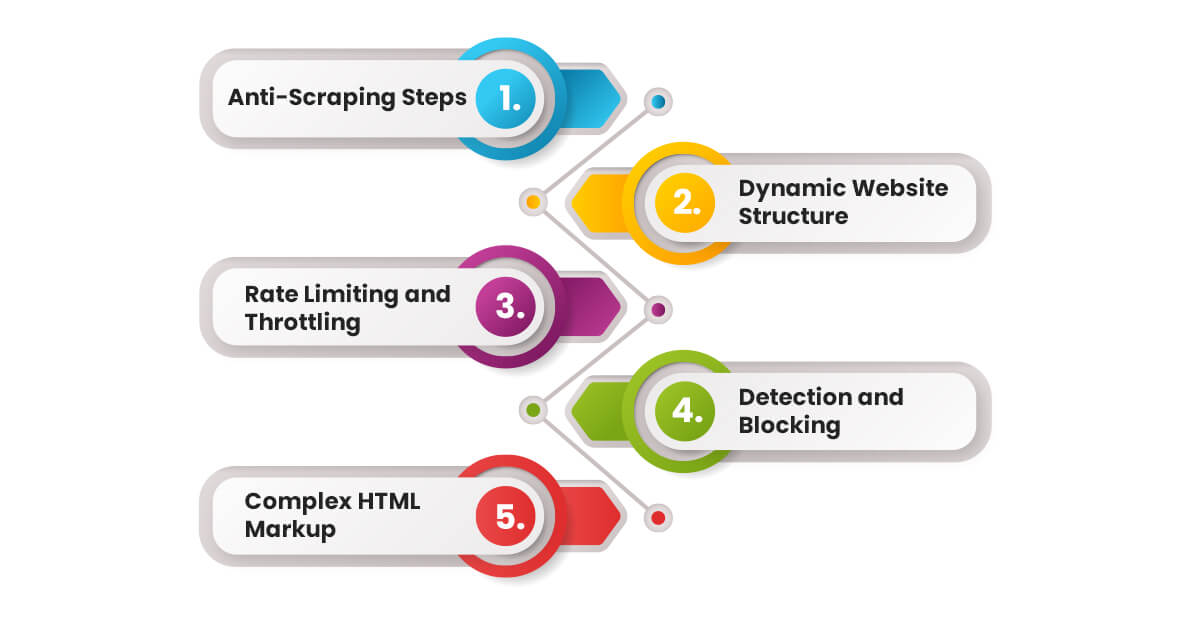
In the digital age, data is king, and for e-commerce businesses, customer reviews on platforms like Amazon are invaluable insights into consumer preferences and sentiments. However, manually sorting through thousands of reviews can be a daunting task. This is where the art of review scraping comes into play, and with the right tools and techniques, you can master this process efficiently.
In this blog post, we'll explore the art of scraping Amazon reviews using Python and Beautiful Soup, unlocking the potential for extracting and analyzing valuable data.
What are Amazon Reviews Scraping?
Amazon reviews scraping means automatically extracting and collecting reviews from Amazon's product pages using web scraping techniques. This tool goes through the website's code, finds the reviews, and pulls out important stuff like who wrote the review, how many stars they gave, what they said, and when they wrote it. It's handy for getting lots of reviews all at once. But it's important to remember to use this tool responsibly and follow the rules set by Amazon and the law.
Amazon Reviews Scraping Using Python follows a process that includes sending requests to the review pages, understanding the webpage's structure, and then extracting desired information such as reviewer names, ratings, and comments. It's akin to teaching a computer to navigate Amazon's website and gather review data without the need for manual interaction.
Why to Scrape Amazon Reviews?
Scraping Amazon review data gives organizations significant information about customer preferences, market trends, and product demand in certain categories. Companies that collect many reviews can evaluate customer feedback to better understand what drives purchase choices and impacts consumer behavior.
Market Research
By scraping Amazon reviews, we learn much about what people like and desire in various items. This allows businesses to understand the market better and determine what customers want. Knowing this allows organizations to better plan their strategy for attracting the proper customers.
Product Development
By reading and scraping Amazon customer reviews, businesses may receive suggestions for improving their products. They may discover which features clients desire and what needs to be improved and even generate new product ideas. This allows them to create items that are tailored to the specific needs and preferences of their clients.
Content Creation
Amazon reviews provide valuable insights from genuine customers. Scraping Amazon customer reviews and evaluations can inspire businesses to develop marketing material, such as customer success stories or examples of how the product benefitted someone. This type of material can help clients trust the brand more.
Price Optimization
Analyzing Amazon reviews can help firms determine optimal pricing for their items. Companies may establish prices that earn money while remaining appealing to customers by studying how they react to varied rates. This helps them remain competitive in the market.
Product Development
Amazon reviews scraping provide valuable feedback for product development. Based on customer feedback, businesses may discover feature requests, areas for development, and potential new product ideas, allowing them to improve their product offerings and better suit the requirements and preferences of consumers.
Content Creation
Customers often provide useful ideas and experiences in reviews. Scraping Amazon customer reviews and evaluations can motivate the development of marketing content like testimonials, case studies, or user tales, all of which can assist potential buyers in creating trust.
Challenges Faced While Scraping Amazon Review Data

Scraping Amazon customer reviews helps to understand what customers think about the goods they buy. This helps us understand if a product is good or if there are problems with it.
On the other hand, Amazon reviews scraping using Python comes with its own set of challenges:
Anti-Scraping Steps
IP filtering and CAPTCHAs are two of the steps that Amazon has put in place to stop website scraping. Because of this, it is more challenging for automated systems to access and get data from Amazon sites.
Dynamic Website Structure
Because Amazon constantly modifies the look and feel of its website, it might be difficult to keep scraping programs up to date because they could malfunction or stop working.
Rate Limiting and Throttling
In order to slow down and reduce the efficiency of the scraping process, Amazon may place a restriction on the total number of requests a scraper may make in a given period of time.
Detection and Blocking
Amazon is vigilant in protecting its website against scraping activities. They use advanced algorithms to detect and block scraping attempts. These algorithms can identify patterns commonly associated with automated scraping tools, such as high-frequency requests or predictable browsing behavior.
Complex HTML Markup
Amazon's product sites use sophisticated HTML structures that include dynamic content, JavaScript, and nesting tags. This intricacy makes retrieving useful information reliably and effectively difficult for scrapers. Scrapers must crawl through levels of nested HTML elements to find and extract the needed data, which necessitates advanced parsing algorithms and strong error-handling procedures.
Furthermore, Amazon constantly alters its website structure and markup, demanding ongoing maintenance and tweaking of scraping programs to ensure continuing performance.
Continue reading https://www.reviewgators.com/amazon-review-scraping-with-python-and-beautifulsoup.php







Comments (0)